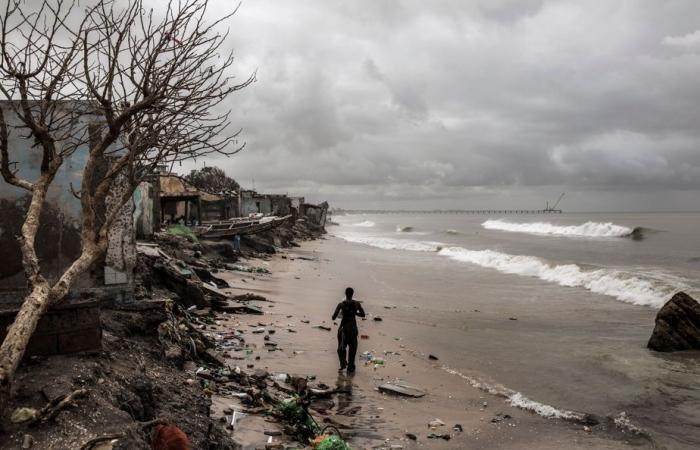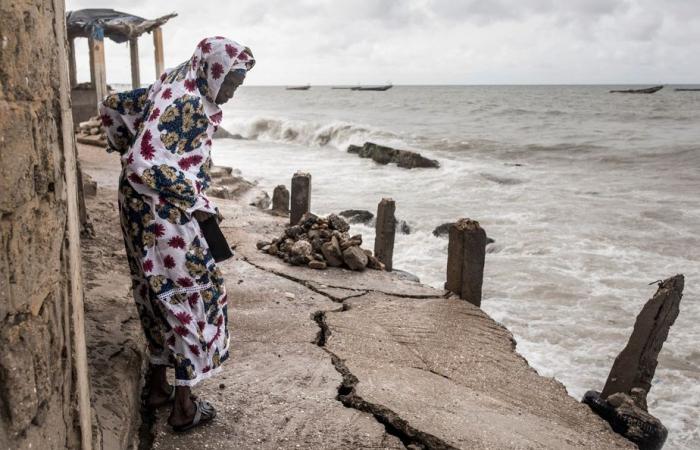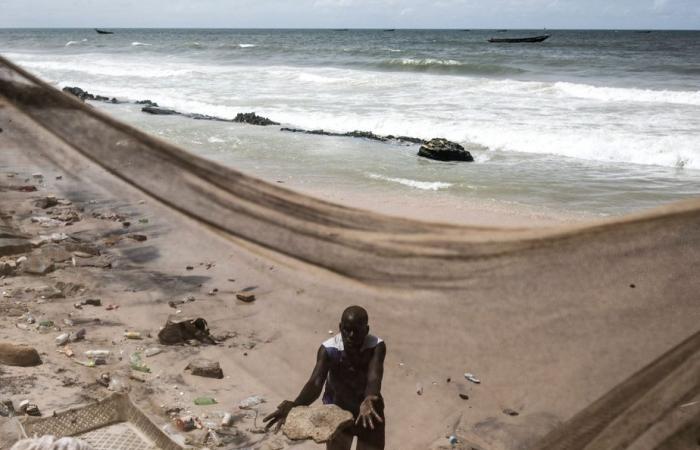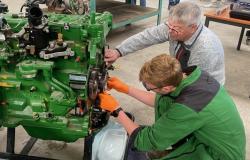(Bargny) Ndeye Yacine Dieng, 67, looks helplessly at his house. Once large and welcoming, it now resembles a ruin due to the repeated assaults of the sea on the fishing district of Bargny, near Dakar.
Published at 10:10 a.m.
Soulé DIA
Agence France-Presse
Sunken buildings, cracked or collapsed walls, damaged roofs, destroyed toilets, gaping holes here and there: in Bargny, one of the localities in Senegal most threatened by rising waters, coastal erosion is gaining ground and haunting sleep populations who fear seeing their city disappear soon if nothing is done.
The last episode of submersion in mid-August left its scars on the Ndeye Yacine house, located on the seafront. Part of the building was submerged, despite the tires and sandbags erected to block the waves.
The enclosure wall was not spared, exposing to prying eyes the small courtyard paved with shells and a dilapidated building where a few members of the family gathered around tea.
PHOTO JOHN WESSELS, ARCHIVES AGENCE FRANCE-PRESSE
In Bargny, coastal erosion is gaining ground.
Only a few rooms overloaded with luggage and eaten away by humidity are now usable. In all, 6 of his 10 children left home, laments Ndeye Yacine.
Around thirty houses were submerged in the neighborhood, leaving several families homeless.
“Everything was swallowed up”
Ndeye Yacine, who has lived in Bargny since his birth, recounts the brutality of the rising waters. “I find it difficult to close my eyes at night for fear that the sea will attack again and take everything away. But I have nowhere else to go,” sighs the sixty-year-old to the sound of the waves dying at the foot of the house. She hopes that the new authorities will quickly provide solutions.
Senegal loses 0.5 to 2 meters of coastline each year, according to the Ministry of the Environment. He cites among the causes the rise in sea level, surface flows, but also the extraction of sand from beaches and abusive construction on the coasts.
The Panel of Experts on Climate Change (IPCC) has long warned about the rise in ocean levels linked to global warming and the risks for the inhabitants of coastal areas, who constitute more than half of the population of the Senegal.

PHOTO JOHN WESSELS, ARCHIVES AGENCE FRANCE-PRESSE
Senegal loses 0.5 to 2 meters of coastline each year, according to the Ministry of the Environment.
These will be more frequent and severe flooding, increased erosion and extreme weather events that could occur every year instead of once a century in the past.
In Bargny, where some 70,000 people live, the coast line has retreated by around sixty meters, say residents, who trace the problem back to the early 1980s. However, it has worsened in recent years, say they.
Many remember a magnificent sandy beach dotted with trees. But all that is gone.
“Before, there was a cemetery here, mosques, playgrounds. But everything has been swallowed up” in recent years, regrets Ndeye Yacine, pointing out to sea where a few colorful canoes drift.
Not far from there, his neighbor Ibrahima Diouf, a 63-year-old retiree, is repairing his small dam in front of his house, a slab at eye level. In shorts and a tank top, he applies several layers of cement to a damaged part of the stone block. Some children help him with the task.
Irregular emigration
He does not intend to abandon his family home. “My grandparents lived here, my mother lives here. Why leave and to go where? There is no more land in Bargny. I will repair it as many times as necessary,” he assures.
Formerly a small fishing town, Bargny is now an industrial zone of the capital Dakar, which continues to expand. It is home to one of the largest cement factories in West Africa and a coal-fired power plant. Pollution has increased significantly there.
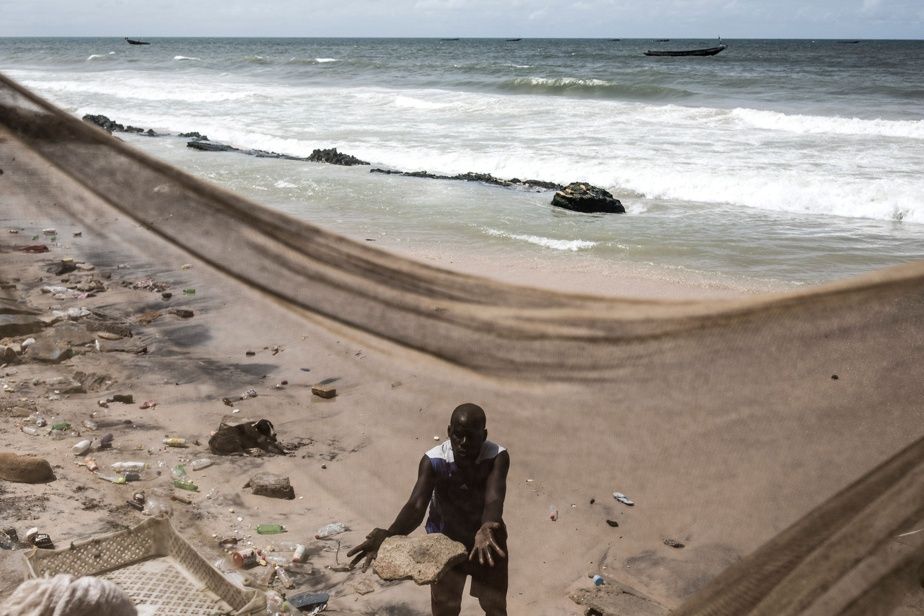
PHOTO JOHN WESSELS, ARCHIVES AGENCE FRANCE-PRESSE
Some 70,000 people live in Bargny.
The scarcity of fish, the demolition of several houses by rising waters, the difficult living conditions and the lack of prospects have pushed many young people to take the migratory route towards Europe.
Mamadou Seck, a young local, says that Bargny “is nicknamed the AIBD” (in reference to the Blaise-Diagne international airport in Dakar) of irregular emigration, as there have been so many departures there in recent years.
For Médoune Ndoye, member of an environmental defense association in Bargny, the State must quickly build breakwaters and restore the marine ecosystem by reforesting the area with casuarina trees, cacti and coconut trees. Otherwise, the village will be nothing more than a memory in a few years, he warns.


